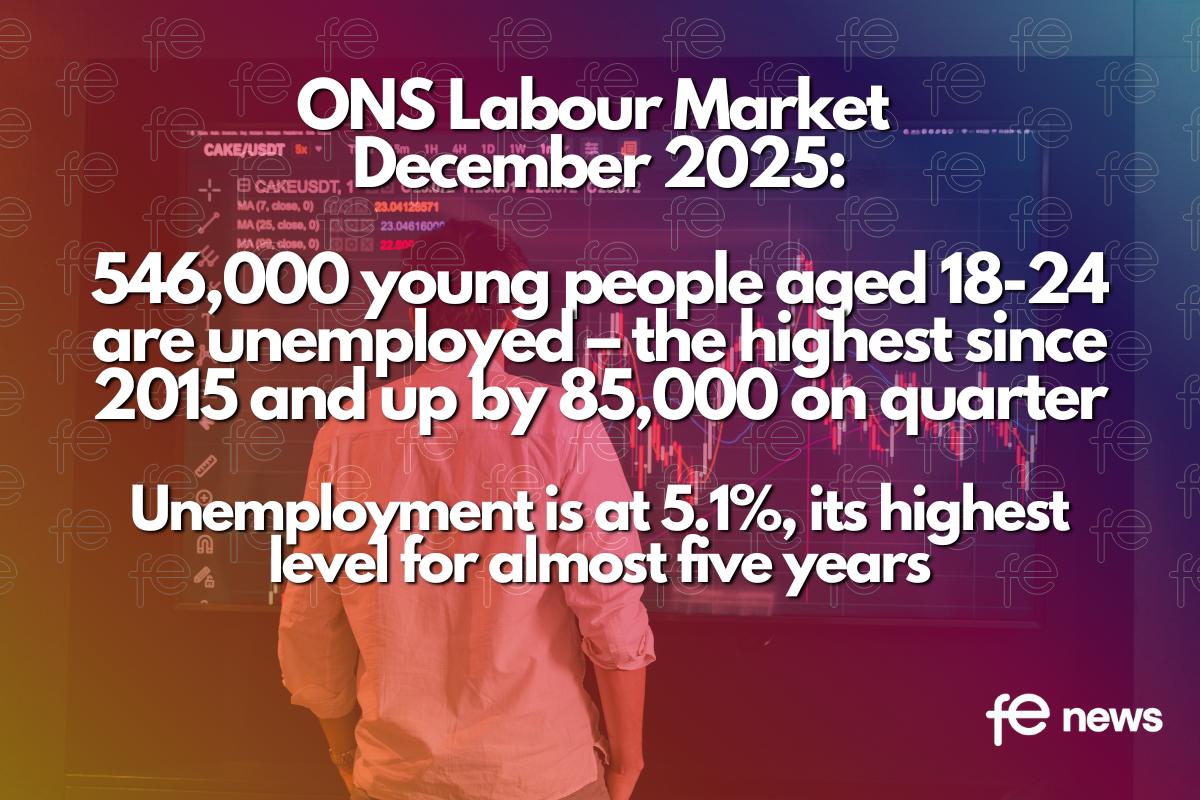UK job vacancies at record high, but still 3.4 million people out of work who want a job

April to June saw more people start a new job than ever before, but more is needed to help meet record employer demand.
Almost three million people have moved off the furlough scheme since March as the economy rebounded and businesses reopened, showing the scheme is already naturally unwinding.
In their latest forecast, the Bank of England set out that they do not expect the unemployment rate to increase any further.
 Chancellor of the Exchequer, Rishi Sunak said:
Chancellor of the Exchequer, Rishi Sunak said:
“Today’s figures show that our Plan for Jobs is working – saving people’s jobs and getting people back into work.
“I know there could still be bumps in the road but the data is promising – there are now more employees on payrolls than at any point since March 2020 and the number of people on furlough is the lowest since the scheme launched.
“We are continuing to support people across the country to boost their skills and find great jobs, for example through apprenticeships, our Kickstart scheme and the Lifetime Skills Guarantee.”
 IES Director Tony Wilson said:
IES Director Tony Wilson said:
“Today’s figures show that the recovery continued to gain momentum through the spring as restrictions eased. Nearly two million people started a new job between April and June, an extraordinary figure and comfortably the highest that we’ve ever seen. However despite this, vacancies continue to rise with more than a million job openings in the single month of July – another record. Put simply, labour supply just can’t keep up with employer demand.
“At the same time though, unemployment is still well above pre crisis levels and the labour pool remains smaller overall than it was, particularly because of more people staying in education rather than entering work. Alongside this, more than two million people are off work due to long-term ill health while more than a million and a half are off due to caring responsibilities. Overall, 3.4 million people are still out of work and want a job. As the labour market continues to tighten, employers and government need to do a lot more to help these people get back into work.”
 Stephen Evans, Chief Executive of Learning and Work Institute, said:
Stephen Evans, Chief Executive of Learning and Work Institute, said:
“The labour market continues to bounce back strongly with payroll employment now recovering almost four fifths of its fall during the pandemic and online vacancies above one million for the first time. Employment rose most strongly for groups like young people who had seen the largest falls. This suggests a labour market heading in the right direction and increasingly tight for employers looking to recruit.
“Yet employment is still down with 201,000 fewer people in payroll employment than in February 2020 and long-term unemployment is up 40%, while older workers are now most likely to be furloughed. To ensure the jobs recovery doesn’t run out of steam, we need to do more to link those out of work with available vacancies, particularly given significant numbers of people remain furloughed ahead of the scheme’s closure in September.”
 Rebecca McDonald, Senior Economist at the Joseph Rowntree Foundation, said:
Rebecca McDonald, Senior Economist at the Joseph Rowntree Foundation, said:
“As the UK edges towards a post-pandemic economy, many badly-hit sectors have been able to bring workers back, and this is borne out in the latest figures showing the number of UK employees continuing to rise through July.
“The months ahead need to see people moving into more stable, well paid jobs that offer a real route out of poverty for workers and their families. For those who have been unemployed since the first lockdown or before, extra help is needed to ensure that people in industries and areas still badly affected are not left behind in the recovery.
“The Treasury must also reverse its plans to impose the biggest overnight cut in the basic rate of social security since World War II, with the majority of those affected from October 6th being working families”.
Reopening leads to record hiring and vacancies – Despite numbers of workers rising, now is no time for complacency, warns UK businesses and universities
Rosalind Lowe, Head of Policy and Engagement at NCUB said:
“Whilst it is positive that the numbers of UK workers on payrolls has risen, now is no time for complacency. There are still estimated to be up to 1.2 million workers on the furlough scheme. With the furlough scheme nearing its end, we will undoubtedly see hundreds of thousands more young people out of the labour market. We know that many UK businesses are still recovering from the pandemic – the battle in Covid-related unemployment is far from won. The UK’s leading universities and businesses are therefore urging caution.”
Lowe continued: “Alongside this, there are a disproportionately large number of vacancies. The number of vacancies hit 953,000 in the three months to July which was a record high. There are therefore serious concerns that we are witnessing a skills mismatch. We are calling on all businesses to continue to collaborate with UK universities. Collaboration between universities and businesses will be critical to aid long-term recovery, and it may well be the lifeline that businesses need.”
Simon Wingate, Managing Director of Reed, says:
“It’s welcome news all-round to see job vacancies hitting a record high, with ONS labour market data showing almost a million job vacancies added to the jobs market between May and July of this year. Reed’s data has shown a jobs boom since the initial lockdown restrictions were lifted in April and this continued into July with over 326,000 new jobs posts added – a 179% year-on-year increase.
“Many of the most significantly affected sectors during the pandemic saw the largest rises in vacancies on Reed.co.uk, with retail (58%), motoring and automotive (57%) and social care (31%) seeing the highest month-on-month increases in jobs added during July.
“The key challenge for employers now is finding the staff to fill the roles. Increased wages – as witnessed by the ONS data – will go a long way, but people across the country may still be hesitant about changing careers. As the country continues to successfully manage the full end to lockdown, and companies respond with more jobs and higher wages, there has never been a better time to see what opportunities could be available.”
 Nye Cominetti, Senior Economist at the Resolution Foundation, said:
Nye Cominetti, Senior Economist at the Resolution Foundation, said:
“Today’s new labour market data provides a clear and encouraging sign that the UK’s economic recovery is continuing, with high numbers of people returning to work, hiring at record levels – and employment levels getting closer to where they were before the crisis began.
“However, while this is cause for optimism, policymakers must not become complacent about the recovery. With the furlough scheme ending at the end of next month, the UK jobs market is not yet in the clear.
“Back-to-work schemes targeting workers of all ages must remain a priority for the Government – as should the provision of adequate income support for those who will find themselves struggling financially this Autumn and beyond.”
Employment continued to rise in July, with payrolled employment levels now up 182,000 on the month, and with hiring at a record level – a welcome sign that the labour market recovery is continuing, the Resolution Foundation said today (Tuesday) in response to the latest HMRC data.
Record vacancies were met with record hiring, with vacancies still being filled faster than before the crisis – reflecting the unique reopening of previously shutdown parts of the economy.
Encouragingly, today’s figures also show that there has been no marked slowing in the rise in employees, with the employment level increasing by nearly 200,000 in each of the last 3 months.
Furthermore, the latest Adzuna data shows that vacancies are continuing to rise across all sectors, indicating a welcome recovery for sectors such as hospitality and tourism, which were hardest hit by the Covid-19 economic crisis – although employment in these sectors is not yet where it was pre-crisis.
However, while the official data also shows good news for the North East, North West and for Northern Ireland, where employment has now surpassed where it was pre-crisis, it spells less good news for London, where employment is still 3 per cent below pre-crisis levels.
Furthemore, while the record hiring is a positive development, there remains a ‘Covid employment gap’ of around 1.9 million (an indication of the fall in employment since the start of the crisis, and employees still on full or partial furlough). Reflecting this, total hours worked in June were still 4 per cent down on where they were pre-crisis.
With the possibility that redundancies will rise again when the furlough scheme finally ends at the end of the next month, it is vital that employers keep hiring and posting vacancies to absorb these workers, along with those who are already unemployed.
Youth employment lags despite signs of economic bounce back

“As we see the benefits of the UK’s vaccination campaign, with less disruptions to our economy, we must aim higher than a return to the old normal where hundreds of thousands of young people were neither earning nor learning.
“Today’s figures show youth employment recovering slower than any other age group, with over 125,000 fewer under 24s in work than before the pandemic. With 200,000 young people still on furlough, and many more school and college leavers looking for their first jobs, young people are continuing to be hardest hit by the economic effects of the pandemic.
“The government must ensure all young people, especially those leaving education this summer or who are long term unemployed, have the opportunity of training, an apprenticeship or a job – an ‘opportunity guarantee’ first promised by the Prime Minister more than a year ago.”
Geoff Smith, CEO, Grayce, comments on youth employment rising:
“With redundancy rates returning to a pre-pandemic level, we’re seeing wider signs of recovery for the UK job market as a whole. It’s also really encouraging that employment levels for our younger age groups have continued to rise through the quarter, highlighting positive signs for our entry-level talent as we emerge from the pandemic and furlough begins to wind down. These tech savvy individuals have digital skillsets that will be invaluable to the UK workforce as we settle into the ‘new-normal’, especially with many businesses shifting to online models in recent times. We’ve seen first-hand how this has increased the demand for tech-focussed skillsets, now servicing 65% more clients than we were in 2016 for change, data and tech placements.
“With this in mind, we must encourage our young people to continuously learn and develop new and relevant skillsets throughout their formal education and beyond. It’s worrying that last week’s GCSE results showed that the number of girls taking computing has fallen for the second year in a row, but we must do our best to help more to develop crucial tech skills and improve their chances of employability today and future proof their careers for tomorrow. The demand for digital talent is currently outgrowing the supply, so if we can continue to develop the technical skills of our younger groups, we’ll ensure the digital skills gap is closed, whilst continuing to provide companies with the best tech talent.”
Female applicants excluded by gendered job adverts
According to the latest study by Applied, women are being alienated by job descriptions that discourage them from applying, with masculine wording reducing the number of female applicants by as much as 10%.
This comes as pressure from the pandemic has already seen women re-enter the workforce at less than half the rate of men, despite job vacancies topping one million as the economy recovers from Covid-19.
Other findings include:
- Only 44% of applications for roles advertised as using ‘strongly masculine’ language came from female candidates
If an advert used feminine-coded or neutral words, the proportion of female applicants had the potential to increase up to 54%
 Darren Hockley, Managing Director at DeltaNet International:
Darren Hockley, Managing Director at DeltaNet International:
“It’s worrying to see that women continue to be locked out of the labour market due to gendered job adverts. The reality here is that unconscious bias continues to exist. HR teams need to work directly with hiring managers to analyse the words and terminology used within job adverts to ensure a diverse pool of talent applies for the role.
“HR needs to support hiring managers with training on unconscious bias, and diversity and equality. This will help them understand how to make the language more inclusive so that more female applicants are encouraged to apply. Using neutrally-coded words had the potential to increase female applicants by up 54%, so in a market where it can be difficult to recruit the right talent, it makes pure business sense to use better terminology in adverts to find a better pool of candidates.”
Documents
Estimates of employment, unemployment, inactivity, average weekly earnings, vacancies and other labour market related statistics for the UK. This release also includes UK and non-UK people in the labour market, number of people on zero hour contracts and Labour market flows.











Responses